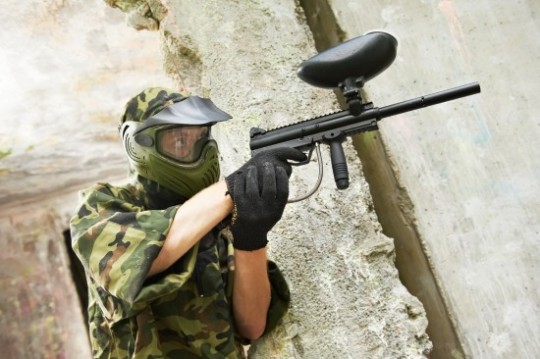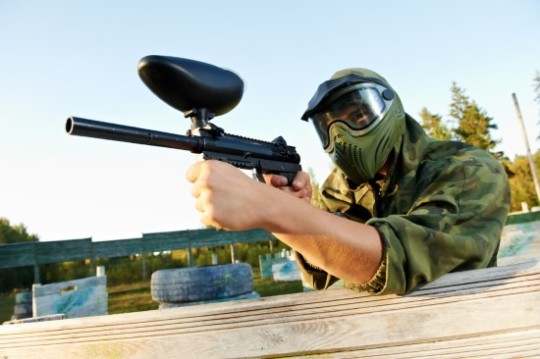Paintball players who are new to the sport can get overwhelmed when looking to purchase their first gun. There are many options for players who are new to the sport, such as a variety of models and manufacturers. It's easy to make an informed decision; you just need to decide what your requirements will be and what you'd like to get from your equipment. If you need extra resources about paintball guns, browse around here.
Don't wanna be here? Send us removal request.
Text
The Complete Guide To Understanding How A Paintball Gun Works

Understanding the mechanisms behind how a paintball works It is crucial to know what a paintball gun actually is. What exactly is a paintball gun and what makes it distinct from other guns? A paintball gun can be described as a gun which is utilized for fun and entertainment. Paintball guns like other guns are made specifically for sporting activities. Paintball guns, though intended to be fun and entertainment however, are still dangerous. Be sure to take safety precautions considered when taking part in these fun activities.
Paintballers are also referred to as "paintballers" and prefer to use the term marker to describe the gun. This is to counter the perception that markers that are used in paintballing are weapons. They also ignore the belief that painting is risky. For you to begin your journey into paintball, you'll need markers and paintballs. Paintballs are plastic balls that are small in size and filled with non-toxic soluble paint. Paintballs are used as markers to ignite paintballs.
What's the function of an Paintball Gun? Get the complete picture

Paintball guns are comprised of a barrel, grip and trigger. These are the three main components which work in tandem to create the guns work. The tanks are filled with carbon dioxide that has been compressed, and in some instances the normal nitrogen or air can be substituted. The hopper holds the paintballs, and is designed to act as storage for ammunition as well as a loading mechanism. Hoppers are equipped with what is known as firing assembly, which strategically holds a single paintball in a position until the next pull of the trigger. Ideal placement of the ball is in front of the piston. If you want to learn detailed information on paintball guns, you've to browse Picked Sports site.
Paintball Tank
Although firing assembly can vary between different markers depending on the make however, the most common element is the presence of an gas valve. This prevents gas from constantly escaping from the tank. The firing mechanism which is the move of a ball from its container to its final destination includes five primary components. The feeder/hopper (or feeder) as well as the tanks for Nitrogen/air/CO2, the airline, trigger, and a barrel. But, a significant portion of the firing takes place inside the barrel.
Paintball Trigger
The trigger is pulled, and the sear, which holds everything together against the gas pressure in the canister is let go. This moves the gas assembly to move forward and permits gas to flow through the air line. The ball is pushed from the barrel by gas pressure and released at the speed that the person was hoping for. The balls are usually composed of plastic and will not burst on collision. If the ball is marked, they can be fired and considered too thin to stop their bursting.
Paintball
The firing system makes sure that the ball stays at the right position when the trigger is pulled. Paintball markers, unlike other guns, are engineered to fire at low speeds that are safe and suitable for entertainment and fun. This is why the manufacturing of such guns is restricted to speeds of up to 300 f/s for purposes of reducing the risk of injury.
Paintball Safety
Concerning the risks involved in paintball activities go when playing at close ranges, the speed of the balls can result in bruises and blisters. The gun's risks can also pose danger to the eyes and ears. Paintball players must use protective earwear and masks while playing. Impacts of the balls that are thrown from a long distance are however harmless but it always advised to always, have safety precautions on.
Paintball gun mechanism
The mechanism behind the firing of paintball guns is the same, there are a variety of kinds of paintball guns that differ in terms of appearance, performance and manufacturer, as well as other factors. There are three kinds of paintball guns: semi-automatic, pump action, and automated paintball guns. Pump action guns have a single fire. Since the pump doesn't reset after each shot, this means that you need to keep the gun operating between shots. They are not permitted at tournaments, however, they are not allowed on the market.
Semi-Automatic Markers
Semi-automatic markers are a step up from the pump action gun, allowing the spring to reset between shots without the involvement of or participation by the paintball player. Paintball guns that are automatic function in a the same manner as machine guns. When the trigger is pulled and kept, the field is sprayed with the balls continuously until and the trigger releases. Semi-automatic markers and automated markers are different in that they are equipped with a circuit board which controls the firing mechanism when the trigger is pulled. Since the gravity-based hopper is unable to feed the ball into the barrel at a rate of eight balls per second The hopper has been enhanced.
Conclusion
Although paintball guns may be classified as sophisticated toys, their operation is far simpler than regular guns. In contrast to the common belief, however, it is easy to comprehend how a gun that shoots paint works. The way it functions is a breeze to grasp. As you can see, the only elements needed to make a paintball gun work is a compressed canister that contains nitrogen or carbon dioxide, and sometimes just standard air. A hopper that is filled with paintballs, and a reliable firing system. When the trigger is pulled, the springs are released thus allowed the compressed air to forcefully come out with a lot of pressure through the air line and thus pushing the ball out of the gun through the barrel.
1 note
·
View note